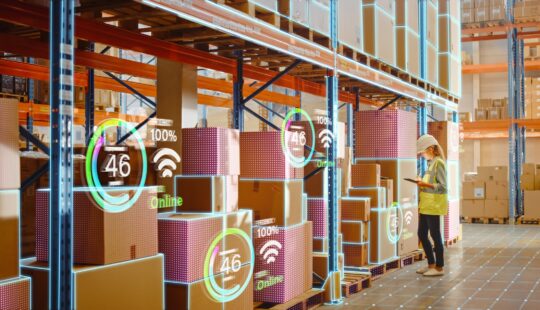As we’ve watched digitalization steadily gathering steam in recent years, with robots popping up in factories everywhere, COVID-19 has put the trend into overdrive. And from everything I have heard, that trend is here to stay.
But what about the realities of all that costly machinery that has been in place since the 1970s? How are manufacturers bringing new technologies into old environments without throwing in the proverbial monkey wrench? How are they protecting their investments?
I learned the answers in a discussion with Andrea Rösinger and Oliver Hoffmann, co-CEOs of Forcam GmbH, a 20-year-old company headquartered in Germany. Its leading application, Forcam Force Edge, helps companies connect “brownfield” machinery with the latest software. In short, Forcam Force Edge collects data “in the edge” – from machinery wherever it’s located – and pushes it via the cloud for aggregation and reporting. The product description on SAP Store explains it well: “Signals – from machines that were never intended to be digitized to semi-intelligent assets – can be understood, translated, and communicated to the shop and top floor.”
Digitizing the Ghost in the Machine
The “aha” moment for this invention struck way back in 2001, said Hoffmann, when Forcam’s founder had a brilliant idea. “These monolithic systems don’t focus on modern machines,” he noted, and clearly, that would have to change for companies to move into the next generation of manufacturing. At the time, SAP was revolutionizing the business landscape with enterprise resource planning (ERP) software, which could integrate data and systems across organizational boundaries.
“Before ERP, every plant had different systems without a common database,” Hoffmann explained. “That was the on-premise age, but client/server technology made it possible to connect and standardize even machines of different vintages from different manufacturers.”
Forcam experienced rapid growth, celebrating its debut and first customer, including global airline and automotive manufacturers. SAP had good market penetration with many of these same companies that were also early adopters of SAP ERP, Hoffmann added. The result was an early, loosely coupled alignment of Forcam with SAP.
As Forcam’s customers expanded their operations globally, Forcam followed suit, establishing service centers in locations convenient to customers’ plants. Over time, the company has evolved into a comprehensive Industrial Internet of Things (IIoT) and production control solution provider, with an extensible cloud platform solution running on some 100,000 machines worldwide.
But the past year has driven an explosion of demand, Rösinger said. One obvious reason is the need to reduce the number of people physically working in a plant; they need a way to access machines remotely and see what’s happening in real time. That is well supported by Forcam Force Edge, which features a role-based interface, whether for the operator on the plant floor or a production manager working from home.
Shifting Expectations for Plant Managers
Other key factors have come into play, Rösinger explained. The pressure is on from CFOs and CIOs to execute processes quickly, switch gears to respond to changes in demand, grease the wheels of the global supply chain, control costs, and boost productivity. Hence, the incentives for plant managers have shifted. Their plant is their own domain, she observed, and their primary mission is to ensure that high-quality products are manufactured on time. End-to-end processes, standardization, and cross-communications across lines of business are not necessarily on their radar screen. “Yet this decentralized model is not practical as digital strategies are introduced,” Rösinger added.
That’s not to say that Forcam Force Edge is unpopular with plant managers. The app helps production people in the plant with decision-making by collecting and normalizing data from signals on process values such as temperature and quantity count, and writing the parameters of machine controls. It supports all industry communication standards, with plug-in architecture for efficient integration of new standards. And it’s fast to implement.
Cloud Integration for Data Access and Insights
Integration with the SAP Digital Manufacturing Cloud solution enables access to all relevant data and insights, not just for in-plant operations but as well for broader managerial use and higher-level improvement processes. And Forcam today has a much closer relationship with SAP that began about a year ago with the arrival of hyperscalers and SAP’s strategic partnership with Microsoft, along with SAP Business Technology Platform. For Forcam, that translates to support for rapid and secure integration with a vast number of machines in plants across distances.
Now an SAP partner, Forcam is doing brisk business on SAP Store, especially as SAP account execs recommend the solution and send customers to SAP Store to find out more. Find out more yourself on SAP Store.
Bill Rojas is senior director of Business Development and Partner Alliances for SAP Digital Commerce.



